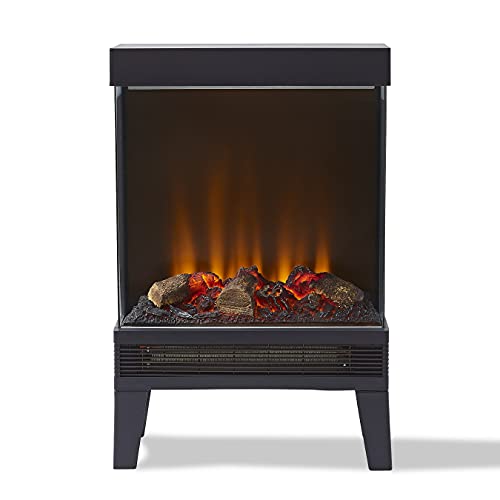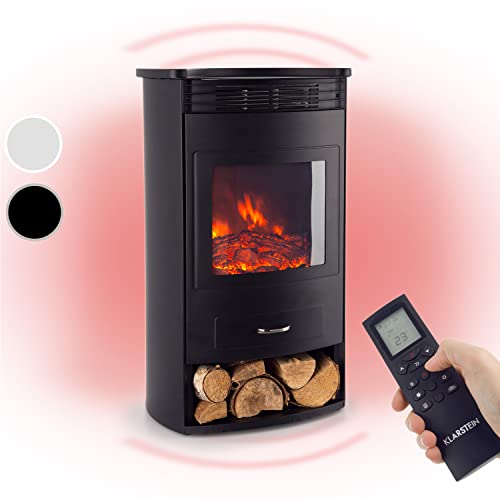10 Untrue Answers To Common Fireplace Questions Do You Know The Right …
Chara
0
6
02.08 23:59
 Bio-Ethanol Fireplaces
Bio-Ethanol FireplacesEthanol fireplaces provide an amazing alternative to traditional wood burning stoves without the need for a chimney. To ensure safety you need to take care. First, you should never put fuel in the flame while it is burning.
 A complete fire suite such as Mano Mano's Adam Solus Fireplace Suite with Colorado Bio Ethanol Fire in Black PS569 is a simple way to make your space more beautiful.
A complete fire suite such as Mano Mano's Adam Solus Fireplace Suite with Colorado Bio Ethanol Fire in Black PS569 is a simple way to make your space more beautiful.Cost
Ethanol Fireplaces are a great way to add a stylish and wood fireplace cozy feature to your home, without the expense associated with wood or gas fireplaces. They have a few distinct advantages over their counterparts that are: they don't require a chimney or flue, and they're not expensive to install (except for the cost of building the fire surround). They are portable and can be used outdoors and indoors. They can even be taken with you when you move!
Bio-ethanol fireplaces are available in a wide range of designs, so you can choose the best one for your space. Some are freestanding, while others are wall-mounted, or can be inserted into a stove or fireplace. Some are remote controllable! They can be used in outdoor areas as a patio heater. These are a great way of adding a little extra heat to your home in the winter months.
The price of a fireplace constructed from bio-ethanol varies according to the kind of fireplace and features you choose. A tabletop model may cost as little as $50, while an expensive one could cost up 600 dollars. The cost of the fuel required for an ethanol fireplace is much lower than that of gas or wood fireplaces.
All ethanol fire places have an ignition device that burns the fuel and generates flames. Some fireplaces have an inbuilt safety device that prevents overheating or fire dangers. Others are manually operated using a lighter, match or lighter. The bio-ethanol fireplace is able to be set up to shut off at any moment. This helps preserve the remaining fuel.
The average cost of a bio-ethanol fireplace is PS300 or less, however you should expect to pay more for a bigger and more advanced model. The price will differ depending on whether the fireplace is manual or automated. The bio-ethanol model that is automated can be more costly than the manual model. However, the added features make it worth the cost.
Ethanol fireplaces can be an excellent alternative to gas or wood fireplace, however, you should take into consideration the costs of installation and fuel cost before buying one. If you're not comfortable installing a fireplace by yourself employ a professional installer to install it for you. The installation cost is considerably less than installing a traditional gas or wood fireplace - simply click the next web page,, and will save you money in the end.
Energy efficiency
In contrast to traditional fireplaces that require a chimney and fuels like wood, coal or gas fires that create carbon monoxide and pollution, bio-ethanol fires emit only water vapour and smoke that is odorless. This means they are safe for use indoors and offer an environmentally friendly alternative to other fire alternatives.
In general bio-ethanol fireplaces tend to be less expensive to run than traditional ones. They are also more efficient as they consume less energy and generating a less heat. They are available in a variety of attractive designs, ranging from traditional open fire designs and stoves to ultra-modern and contemporary bioethanol burners with glass frontages. They can be mounted on the wall or freestanding and can be installed in any room. They can be moved between homes, making them ideal for renovations and new builds where chimney breasts have been removed.
There are some things to keep in mind. It is not recommended to add more fuel to a bioethanol fire that is still burning. If you try to do this, it may cause the flames to spread, and could possibly ignite nearby flammable materials. It is also recommended to avoid touching the nozzle or the burner when it's in operation.
Another benefit of these fires is that they can be used in places that do not allow chimneys. In contrast to open and wood-burning fireplaces, they don't need chimneys or flues and can be incorporated into existing walls, saving you the expense of building a chimney. They also require less maintenance, and you can even buy fake flues to complete the appearance of your home.
Another advantage is that they can be used both outdoors and inside, allowing you to enjoy your fireplace throughout the year. Keep your fireplace away from combustibles and avoid placing it near furniture or curtains which could easily ignite. Also be sure to never leave a bio-ethanol fireplace unattended or move it while it's running.
Bioethanol fuel is a renewable source of energy, is made from a combination of plant sugars and yeast along with water. It is a more eco-friendly alternative to fossil fuels like petroleum or coal since it makes use of modern biochemical processes instead of geological ones. The process also produces more oxygen and less carbon dioxide than fossil fuels, meaning it's better for the environment. Biofuel can be produced from organic and non-organic sources, however, it is more common to make use of agricultural waste for the production of bioethanol.
Safety
Bioethanol fireplaces offer an environmentally friendly and safe alternative to traditional wood and gas fires. They create real flames, but they do not emit smoke or particulates. They emit only water vapour, and small amounts of carbon dioxide. It is the same CO2 absorbed by plants used to produce fuel. It is less harmful to the environment.
It is crucial to follow all safety and use instructions given by the manufacturer when using a bio-fireplace. For example it is not recommended to add fuel to a burning flame unless it has been completely snuffed out. The bio ethanol could splash or spill, and cause a fireball, which could ignite nearby flammable items.
Keep children and other materials that are flammable away from the fire as the slightest breeze could cause the fuel to catch the flame. Store the fuel in a location that is secure and out of reach of pets or children. If you have any concerns or questions you need to contact the manufacturer.
The ethanol fireplace is a great alternative to save money while providing warmth to your home, without the hassles of a wood-burning stove or chimney. They are simple to use and can be put in any location, inside or outside. They come in a variety of different styles and designs. This makes them a great choice for any design.
Many companies offer complete installation services, so that you can set up bio-ethanol fireplaces quickly and easily. Some offer a no-cost design consultation so that you can discover the options available before making a decision. It is recommended to obtain an estimate prior to making a purchase. The cost of a bio-ethanol fireplace can differ based on many factors.
The cost of installing a bio-ethanol fireplace will depend on the kind of fire you pick and the size of your room. In general, you can expect to pay a few hundred dollars for a basic fire and up to several thousand dollars for a more sophisticated model.
Installation
Ethanol fireplaces are a popular choice for homeowners who want to keep their homes warm and cozy. They are also a great alternative to wood-burning fires. Ethanol is clean to burn and produces less ash than wood-burning fires. But there are a few things to consider before making the purchase.
It is essential to decide whether you want a freestanding or a built-in fireplace. Freestanding fireplaces made of ethanol can be easily moved from room to, and some are even suitable for outdoor use. You can build a bio-ethanol fireplace built-in or hire an installer. It's worth it. A fireplace that is built-in to ethanol will be a focal point in your home and can boost its value.
Some bio-ethanol fireplaces appear like wood burning stoves or open fires and others have a modern look. As long as you follow all safety instructions, they're safe to use indoors. In general, you should use a bio-ethanol fireplace in rooms with good airflow. Also, don't put it near anything that could ignite.
Bioethanol fires also create stunning flames that are perfect to bring the design of your home. They are easy-to-install and don't require a gas supply or flue, which makes them ideal for modern and traditional homes. Some companies provide zero clearance fireplace inserts, which allow the installation of custom-built ethanol fireplaces with non-combustible surrounds.
The price of a fireplace made of ethanol will differ based on the dimensions, style, and accessories. You must also decide if you'd prefer an automatic or manual burner. Manual burners require a lighter or match to light and come with an unpleasant smell that some do not like. A burner that is automated, on the other hand has many advantages over a manual one. It will save you time and money.
Another benefit of bio-ethanol fireplaces is that it doesn't require chimneys, making them ideal for homes with newer construction. They are also cheaper than wood-burning fires and mains gases. They don't produce the same amount of heat they produce less heat than electric fires or kiln dried logs should, therefore you shouldn't use them as your primary heating source.
Comments
- You'll Never Guess This Sofa Couch For Sale's Tricks
- Why Is This Keys Repair So Beneficial? In COVID-19?
- Car Key Repair Tips From The Most Effective In The Business
- 15 Things You Don't Know About Used Sofas For Sale
- The Three Greatest Moments In Car Key Repair Near Me History
- Do You Think Cheap Couches For Sale Ever Be The King Of The World?
- You'll Never Guess This Car Key Button Repair's Secrets
- 글이 없습니다.
반응형 구글광고 등






